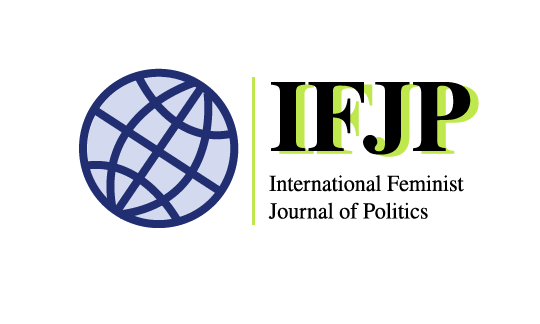She-power? Official narratives of “Xinjiang women” in China’s People’s War on Terror
By: Pablo A. Rodríguez-Merino (he/him) and Chi Zhang (she/her)
Five Muslim Uyghur women were sentenced to jail terms ranging from seven to 20 years by a court in Korla, Xinjiang, for engaging in ‘illegal’ religious activities, according to a copy of the 2019 verdict. How does the Chinese state rationalise and justify its treatment of women in Xinjiang? In our recent article, we explore the gendered hierarchy of power in China's counterterrorism discourse and its impact on Uyghur women. We problematize the Chinese state’s construction of ‘Xinjiang women’ in the realms of political violence and activism. In investigating such construction, we have sought to avoid co-opting the language of women’s rights and empowerment to speak for those who do not necessarily seek our representation. We have sought to reflect upon own possible presumption that a repressed group of women must be active agency seekers or desire the kind of liberal agency that is often sought by scholars active and visible in the West.
Our examination of China’s official government and state media narratives of counter-terrorism identifies four main themes in the official representation of ‘Xinjiang women’, which is how women from the Turkic Muslim ethnic minorities are often referred to in the Chinese state discourse.
Image by liuguangxi from Pixabay
The first theme involves the discrediting of Uyghur and Kazakh women's activism by portraying them as negligent mothers or as having moral defects or health conditions. In this trope, the ‘Xinjiang women’ are denied agency through the attribution of their actions to China's beneficial policies or its perceived enemies, rather than to women themselves. Female political activists are thus represented not as political actors on their own right, but as mere tools for anti-China forces. In this vein, they are portrayed as passive victims lacking the ability to understand their own reality.
A second theme is the portrayal of Uyghur women as weak and passive individuals who are easily influenced by extremist men, reinforcing the stereotype of women as powerless. Even after severing the association with the influencing agent, the victimized Xinjiang women’ are represented as incapable of abandoning "extremism" on their own, perpetuating a portrayal or Turkic Muslim women in China as helpless and in need of rescue of rescue by the Chinese state.
This enables the state to portray itself as a savior (our third theme) who can liberate these women from their ‘extremist’ existence by means of ‘vocational education’ and ‘training’. In the official narrative, the Chinese state is presented as a benevolent patriarch that provides a moral code to women who previously lacked one an can only now, thanks to the state’s mediation, gain self-respect and become independent and competitive. These narratives depict the state as providing security and happiness, earning the gratitude from those who have undergone the transformative experience of re-education.
The fourth and final theme is the construction of Xinjiang as a modern, metropolitan space closer to Beijing and thirsty for development. In this context, Uyghur women are represented as agentic figures with the right to make decisions about their financial and economic prosperity or their reproductive health, including the choice to be sterilized after one child. The Chinese estate thus emerges as guarantor of empowering experiences for Uyghur women.
Overall, our examination finds China’s rhetoric about ‘Xinjiang women’ reminiscent of the "saving Muslim women" trope used in the American "War on Terror" playbook. In the name of giving Muslim women agency, China’s People’s War on Terror has taken away their voice and their autonomy to decide what is and what is not authentic to their cultural traditions. Sharing the ‘civilizational’ impulse of the Global War on Terror, China’s counter-terrorism strategy is imbued with a sense of social order in which women’s rights manifest as willingness to participate in job training and willingness to denounce extremist ideologies.
As the dominant Han society is not entirely immune of toxic masculinity, China’s official narratives surrounding Xinjiang women is a peculiar clash of a male-dominant state seeking to rebuke male-dominance in one of its unfavoured minority groups. The state blamed the patriarchal structure within the Muslim communities for forcing women into dependence, whereas institutional discrimination against women is observed in all societies across China. Setting a few examples of empowered businesswomen does little to improve the credibility of the official discourse in a country where the most powerful positions – members of Politburo standing committee – are all occupied by men.
Each blog post gives the views of the individual author(s) based on their published IFJP article. All posts published on ifjpglobal.org remain the intellectual property and copyright of the author or authors.
Pablo A. Rodríguez-Merino is a Senior Lecturer in the Department of Defence and International Affairs at the Royal Military Academy Sandhurst. His research explores political violence, terrorism, and security narratives. He has published in journals such as Critical Terrorism Studies, Central Asian Survey, International Feminist Journal of Politics or Monde chinois - nouvelle Asie. He is the author of Violence, Discourse, and Politics in China's Uyghur Region: The Terroristization of Xinjiang.
Chi Zhang is a British Academy Postdoctoral Fellow at the University of St Andrews, and an Associate Member of the Handa Centre for the Study of Terrorism and Political Violence. She has published in journals such as Journal of Contemporary China, International Feminist Journal of Politics, Terrorism and Political Violence, Studies in Conflict & Terrorism, Politics and Religion and Asian Security. She is the editor of Human Security in China: A Post-Pandemic State and the author of Legitimacy of China’s Counter-Terrorism Approach: The Mass Line Ethos.




